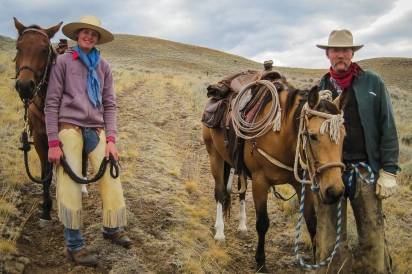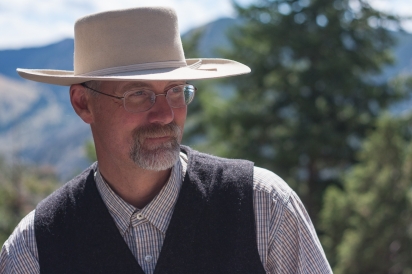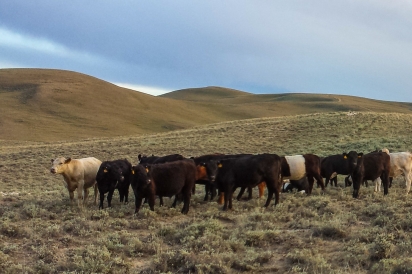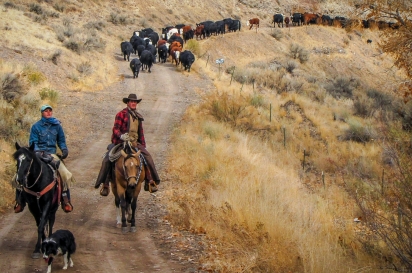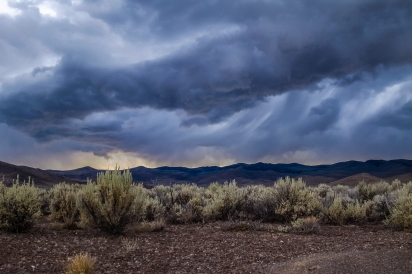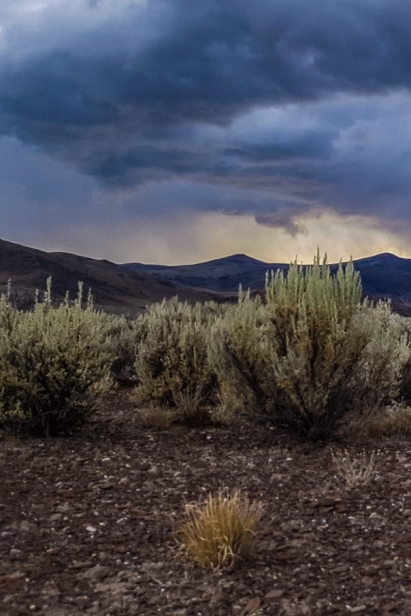ALDERSPRING RANCH: Where new cowhands learn old tricks
Although Glenn and Caryl Elzinga of Alderspring Ranch look like typical Idaho ranchers, their cattle operation is far from ordinary.
Like other ranchers, their homestead lies in a remote, spectacular mountain area called the Pahsimeroi Valley in central Idaho. They raise skilled cowhands-seven daughters who range in age from 11 to 22 years old. They also graze cattle on private and federal rangeland.
But what sets them apart is their private and leased land is certified organic and they sell grass-fed, organic beef to consumers across the country. Though they’re first-generation ranchers, their ideas on grazing and raising livestock have existed for thousands of years.
Glenn and Caryl are in their mid-50s. He’s a self-described “recovering timber beast” who spent his career working as a forester, and she’s a PhD plant ecologist who, literally, wrote the book on rangeland plant monitoring. As a result, science-based reasoning and common sense guide the Elzingas’ beef operation. They’re currently developing a cattle grazing method they believe produces healthy, delicious beef, allows ranchers to maintain wildlife habitat to meet federal regulations, and generates good returns.
Typical ranchers check and move their range cattle regularly. Some ranchers hire riders to herd cattle out of areas they could damage, such as creeks. But critics of public land grazing say even this doesn’t adequately protect watersheds and wildlife habitat. The Elzingas’ approach addresses this criticism with careful management. They live with their cattle—or their “beeves,” as they call them—24/7 while they’re on public rangeland. In addition to keeping beeves out of sensitive areas, homegrown cowgirls and hired cowboys move the herd continuously to keep its impact low, and show Alderspring stock where to find the best grass as they follow summer up the mountains.
Their trek starts in late spring, when the herd leaves Alderspring’s 1,650 acres of private sagebrush-grass range and irrigated pasture. They head north onto the 46,000-acre federal Hat Creek Allotment, which is almost as large as the city of Boise. At night, beeves rest inside
a portable electric fence while cowhands cook dinner in a camp kitchen and later crawl into sleeping bags. With people nearby, predators
and rustlers avoid the temporary camp.
The Elzingas bought Alderspring Ranch in 2007 from The Nature Conservancy (TNC), which had acquired the land, formerly known as the Moen Ranch, in 2004 to protect habitat for wildlife, especially chinook salmon, steelhead and bull trout. Upland areas of the property form Alderspring Ranch and Idaho Fish and Game holds the riparian habitat along the river. Conservation easements shield both properties from development.
Mark Davidson, director of conservation initiatives for Idaho’s TNC, said his organization is participating in the herding project because it turns on its head the current paradigm of simply fencing and herding cattle out of some places. The Elzingas are the only cattle ranchers trying this labor intensive approach to meet their ranching and conservation goals.
Davidson noted other differences between the Elzingas and typical ranchers. “The first time I met them, their ranch vehicles were Toyota Tercels. Glenn is a tall guy and he drove up and unfolded himself and got out. When I asked about his vehicles, he said, ‘They’re cheap, they get great gas mileage and you can [use them hard].’”
Last year was the first summer of Alderspring’s “new” approach to grazing. It was the first summer they didn’t lose any animals to wolves, poisonous plants, theft or straying.
The Elzingas also saw healthier beeves, which meant more beef. Glenn explained that if cattle had their way, they’d spend all summer lounging next to a cool, shady creek, ignoring the more abundant and diverse feed in the uplands. The Elzingas believe the wild diversity of plants on their range also accentuate the taste of Alderspring beef.
Glenn pointed out that they’re not the first to herd livestock. “Herding might be the oldest profession,” he said. Caryl added that keeping close tabs on stock would help cattle ranchers meet federal grazing guidelines. “Herding and complete control of livestock may be the only way for ranchers to meet their federal guidelines for grazing, including new ones to protect sage grouse habitat.”
This year, a sustainable agriculture grant from the USDA allowed the Elzingas to collect detailed information on cattle weights and rangeland condition before and after grazing. At the end of the season, they’ll compare growth of their beeves with that of a non-herding neighbor grazing similar rangeland with similar cattle. This will help them compare costs and returns from herding.
Glenn and Caryl Elzinga don’t follow Idaho ranching traditions. They reach back further, to the roots of agriculture, to find “new” ways to raise cattle and produce organic grass-fed beef.



